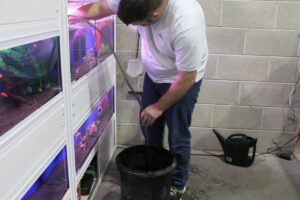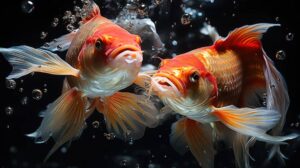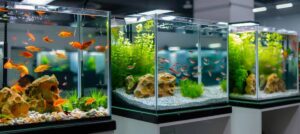The Pets Care Blog
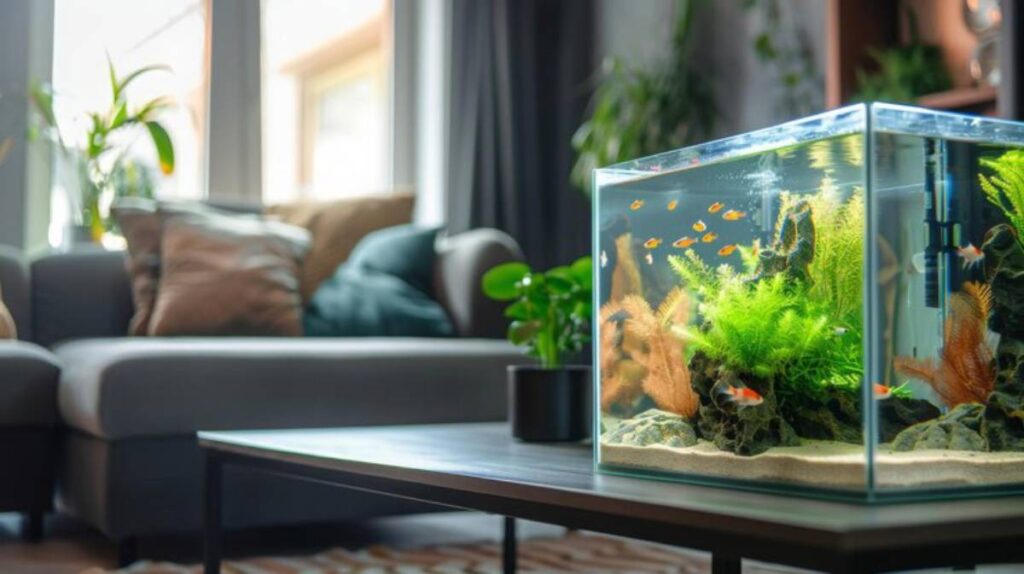
Choosing the Right Tank Size for Your Home: A Complete Aquarium Size Guide for Beginners
Buying your first aquarium is an exciting moment — until you start comparing tank sizes. A 10-litre starter kit looks cute, but is it practical? A 200-litre tank sounds amazing, but… does it even fit in your living room?
When setting up your first tank, choosing the right aquarium size can make or break your success as a fishkeeper. Too small, and you’ll face constant water quality issues. Too large, and you might feel overwhelmed with maintenance and cost.
This guide will walk you through everything you need to know about beginner tank dimensions, including how to assess your available space, what different sizes offer, and how to balance your ambitions with your lifestyle. Whether you’re planning a peaceful corner tank or a lively living room showpiece, you’ll find the right match here.
Why Tank Size Matters More Than You Think
It might be tempting to start small — after all, isn’t a little tank easier to manage? Surprisingly, the opposite is often true.
Bigger tanks offer more stability
- Water chemistry changes more slowly
- More room for beneficial bacteria
- Easier to maintain temperature and pH
- Fish have more swimming space, reducing stress
Smaller tanks require more attention
- Water parameters fluctuate rapidly
- Less margin for error if you overfeed or miss a cleaning
- Fewer fish options due to space and stocking limits
So while that 20-litre tank looks like a low-maintenance option, it might demand more time and care than a well-sized 75-litre setup.
How to Choose the Right Tank Size for Your Space
Before you shop, take a moment to plan practically.
1. Room Dimensions and Layout
- Measure the area you want to place the tank
- Ensure there’s enough room behind for cords and filter access
- Avoid high-traffic areas where vibrations or noise could stress fish
2. Floor Strength and Weight Considerations
Water is heavy — 1 litre = 1 kg.
- A 60-litre tank weighs around 70–80 kg when full (including substrate and decor)
- A 200-litre tank could weigh over 250 kg
Ensure your floor or stand can support it, especially in upper-floor flats.
3. Lighting and Sunlight
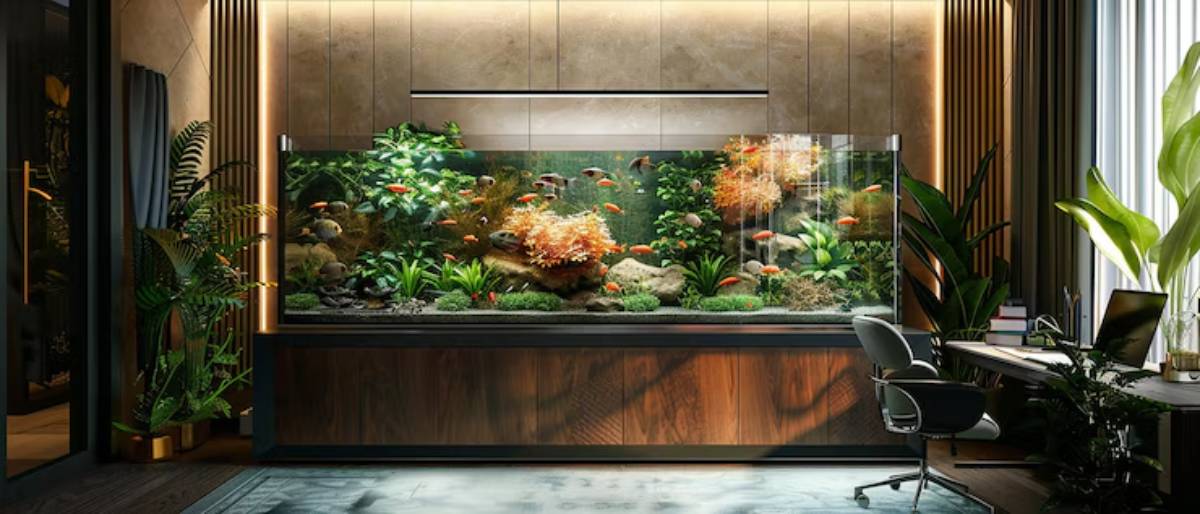
Avoid placing your tank near windows. Direct sunlight encourages algae growth and can lead to temperature swings.
For more placement tips, check out Avoiding Sunlight: Tank Placement Mistakes to Avoid.
Common Tank Sizes and What They’re Best For
Here’s a breakdown of popular aquarium sizes with pros, cons, and ideal use cases.
Nano Tanks (10–20 litres)
- Best for: Shrimp, snails, one betta
- Pros: Small footprint, low initial cost
- Cons: Highly sensitive to parameter shifts, limited stocking options
Small Tanks (30–50 litres)
- Best for: A few small fish (e.g. guppies, tetras), beginner planted tanks
- Pros: Easier to heat and clean than nano tanks
- Cons: Still limited in fish types and numbers
Medium Tanks (60–100 litres)
- Best for: Community tanks, starter aquascapes, learning maintenance routines
- Pros: More forgiving, supports more diverse setups
- Cons: Slightly higher cost, needs a sturdy stand
Large Tanks (120–200+ litres)
- Best for: Cichlids, goldfish, advanced aquascaping, larger schools
- Pros: Very stable, visually stunning, supports more fish
- Cons: Higher cost, larger footprint, heavier maintenance gear
Looking for help choosing filters for these sizes? Visit Comparing Sponge, Hang-On-Back, and Canister Filters.
Matching Tank Size to Your Fish
Fish need room to swim, hide, and thrive. A common beginner mistake is overstocking — cramming too many fish into a small tank.
General stocking guideline:
1 litre of water per 1 cm of adult fish (not fry size)
But also consider:
- Territorial behaviour
- Schooling needs
- Bioload (goldfish produce more waste than tetras)
Here are a few examples:
| Fish Type | Minimum Tank Size | Notes |
| Betta | 20 litres | Solo; gentle flow needed |
| Guppies | 40 litres | Keep in trios or more |
| Neon Tetras | 60 litres | Shoal of at least 6–8 fish |
| Goldfish | 120 litres (for 1) | Need high filtration and space |
| Dwarf Gourami | 75 litres | Peaceful, but needs swimming room |
| Corydoras Catfish | 60 litres | Schooling bottom dwellers (group of 5+) |
Always research adult size and behaviour before committing to a species.
Maintenance Implications by Tank Size
You’ll hear that big tanks are easier to clean, but it’s more about volume than frequency.
Small Tank Maintenance (10–50 litres):
- Weekly water changes (25–50%)
- Frequent parameter testing
- Daily observation essential
Medium to Large Tank Maintenance (60–200+ litres):
- Weekly or bi-weekly water changes (20–30%)
- Filter cleaning every 3–6 weeks
- Parameters more stable = less stress for you and the fish
Other Setup Considerations for Different Tank Sizes
Tank size affects more than just how many fish you can keep. It influences your entire setup experience.
1. Filtration

- Small tanks: sponge or internal filters
- Medium tanks: hang-on-back (HOB) filters
- Large tanks: canister filters or sump systems
2. Heating
- Easier to maintain temperature in larger volumes
- Small tanks heat (and cool) quickly — need precise heaters
3. Lighting and Plants
- Tall tanks may need stronger lights for planted setups
- Nano tanks overheat under high-intensity lighting
4. Aquascaping
- Smaller tanks limit hardscape and plant choices
- Medium and large tanks offer more design flexibility
Where to Place Your Aquarium at Home
Even the best-sized tank won’t work if placed poorly. Here’s how to choose the best spot.
Ideal Placement:
- Away from windows and direct sunlight
- Near a power source (for filter, heater, lights)
- On a sturdy, level surface — ideally a tank stand
- Somewhere you’ll enjoy it daily, not tucked in a dark corner
Avoid placing tanks near radiators, air vents, or loudspeakers. Fish are sensitive to temperature swings and vibrations.
Starter Tank Kits: Are They Worth It?
Many beginners start with an “all-in-one” tank kit — and that’s okay. But be aware of limitations.
Pros:
- Includes filter, light, and sometimes heater
- Easy setup for first-time hobbyists
- Affordable entry point
Cons:
- Often, underpowered filters or lights
- Limited space for upgrades
- May not suit more demanding species
Consider kits as a stepping stone — but be ready to swap out equipment if your setup grows.
Conclusion: Size for Stability, Setup for Success
Choosing the right tank size is about more than just fitting it on a shelf — it’s about finding a balance between your lifestyle, your fish’s needs, and your long-term enjoyment of the hobby.
While nano tanks can be charming, medium tanks (60–100 litres) offer the best mix of stability, stocking flexibility, and ease of maintenance for most beginners. Large tanks are fantastic once you’re confident with water chemistry and routine care.
So, what’s your space like? Take a few minutes to measure your area, think about your goals, and browse some tank options. Let us know in the comments what tank size you’re considering — and we’ll help you get started!




